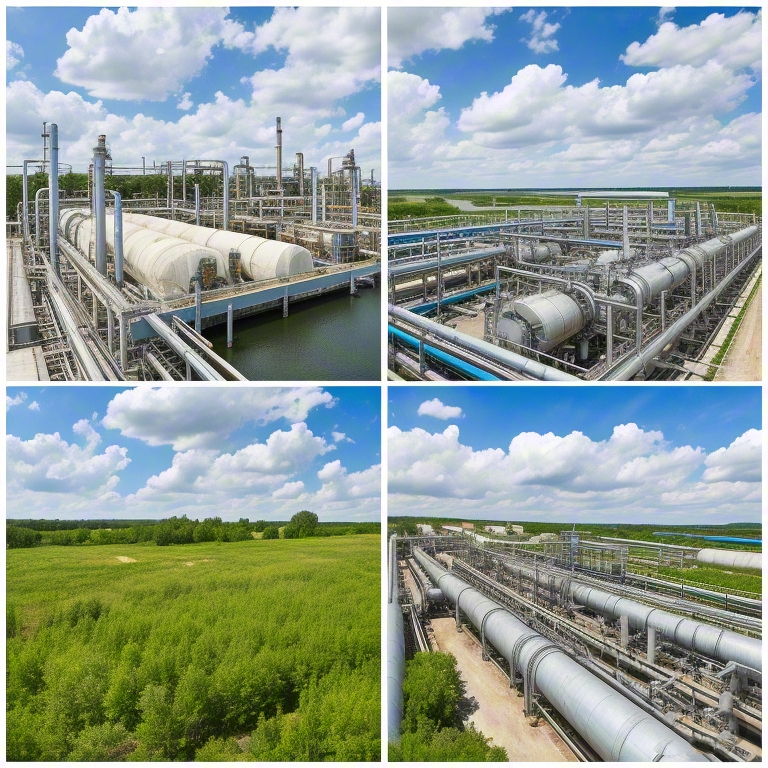Scientists Develop the World's Thinnest Light Absorbers
Applications Of Electrical Conductivity In Industrial Water Treatment
Introduction
As global attention to water resource management and pollution control increases, water quality monitoring has become a crucial issue in various industries. In the industrial field, water quality directly impacts production efficiency, equipment lifespan, and product quality. Electrical conductivity, a key indicator of water quality, plays a vital role in industrial water treatment. This article will explore the applications of electrical conductivity in industrial water treatment, analyzing its importance and role in different industrial scenarios.

What is Electrical Conductivity?
Electrical conductivity (EC) is a measure of the ability of water to conduct electricity due to dissolved ionic substances. The conductivity of water is mainly influenced by the concentration of salts, minerals, and other dissolved substances. The higher the electrical conductivity of water, the more conductive substances it contains, usually salts, acids, bases, or other chemicals. In pure water, which lacks dissolved ions, conductivity is very low.
The Importance of Electrical Conductivity in Industrial Water Treatment
1. Water Quality Monitoring and Control
Water used in industrial processes is often treated to meet specific quality standards. Electrical conductivity serves as an effective indicator of water quality, reflecting changes in the concentration of ions in the water. By regularly measuring electrical conductivity, it is possible to monitor fluctuations in water quality and ensure it meets production requirements. For example, high-purity water required in chemical production must maintain a very low conductivity range, where even small deviations can affect the reaction process or cause negative outcomes.
2. Ion Exchange and Water Softening Processes
Ion exchange resins and water softening devices are widely used in many industrial water treatment processes to remove hardness ions (such as calcium and magnesium) from water. A key indicator in these processes is electrical conductivity. When water undergoes ion exchange, calcium and magnesium ions are removed, leading to a significant drop in electrical conductivity. By monitoring conductivity, operators can determine the effectiveness of the treatment and adjust or replace the resin as necessary to maintain optimal water quality.
3. Monitoring in Reverse Osmosis (RO) Systems
Reverse Osmosis (RO) is a widely used water treatment technology, particularly in industries requiring high-purity water, such as electronics manufacturing and pharmaceuticals. RO systems can remove most dissolved substances from water, achieving extremely high purity. However, as the filtration process progresses, the RO membranes may become fouled or clogged, causing conductivity to rise. Continuous monitoring of conductivity can help identify system failures or contamination early, reducing maintenance costs and ensuring stable water quality.
4. Applications in Cooling Water Systems
In many industrial processes, cooling water systems are used to maintain equipment operating temperatures. In these systems, electrical conductivity is related not only to the concentration of dissolved salts but also to corrosion products, metal ions, and other contaminants in the system. Excessive contaminants can cause equipment corrosion or scaling. By regularly measuring electrical conductivity, companies can monitor the water quality in cooling systems, making necessary adjustments to ensure equipment longevity.
5. Chemical Dosing Control in Water Treatment
Chemical dosing is essential in many industrial water treatment processes, including the use of coagulants, anti-scaling agents, and disinfectants. The effectiveness of these chemicals is closely related to the ion concentration in the water. Electrical conductivity can serve as an indirect indicator for adjusting the dosing levels. By continuously measuring electrical conductivity, operators can precisely control chemical dosing, improving treatment efficiency and reducing costs.
Electrical Conductivity Measurement Methods and Techniques
In industrial water treatment, electrical conductivity is usually measured using conductivity meters. These instruments typically consist of two electrodes that measure the impedance to the flow of electricity, which is then used to calculate conductivity. Common measurement methods in industrial environments include:
1. Online Conductivity Measurement
Online measurement systems enable real-time monitoring of water quality, making them particularly suitable for continuous industrial processes. These systems are typically installed in pipes or water storage tanks, with the measured results transmitted to the control system via data interfaces.
2. Portable Conductivity Meters
For occasional testing or field sampling, portable conductivity meters are an ideal choice. Operators can take the instrument directly to the field, quickly and accurately measuring water quality and making necessary adjustments based on the results.
3. Smart Water Quality Monitoring Systems
With the development of the Internet of Things (IoT), many industrial water treatment systems have begun integrating smart monitoring features. These systems can not only measure electrical conductivity in real time but also automatically adjust other parameters in the treatment process, such as pH levels and dissolved oxygen concentration, further enhancing automation and accuracy in water treatment.
Conclusion
Electrical conductivity, as an important parameter for water quality monitoring, plays a crucial role in industrial water treatment processes. Whether in ion exchange, reverse osmosis, or cooling water systems, precise measurement and real-time monitoring of conductivity ensure that water quality meets production requirements, improves equipment efficiency, and reduces operating costs. With advancements in technology, electrical conductivity measurement techniques will continue to become more intelligent and accurate, providing strong support for the further optimization of industrial water treatment.
Electrical Conductivity,Industrial Water Treatment,Reverse Osmosis (RO),Cooling Water Systems
Suzhou Delfino Environmental Technology Co., Ltd. , https://www.daruifuno.com